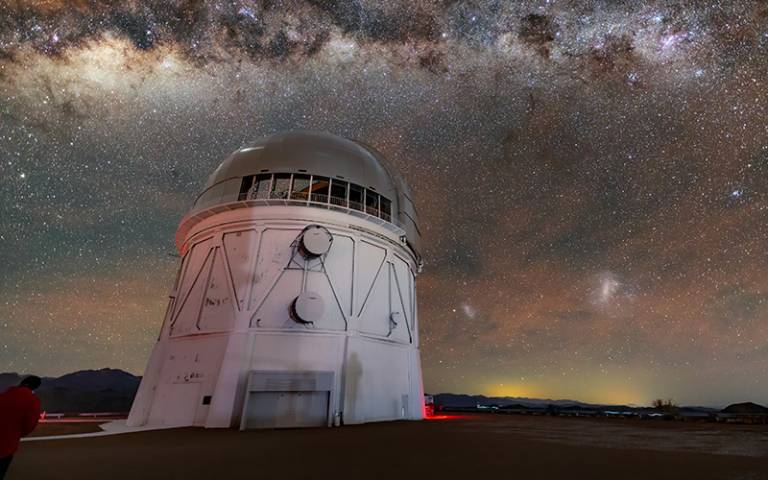Advancing Cosmic Knowledge: New Research Enhances Understanding of the Expansion of the Universe

The international group of researchers, led by the U.S. Department of Energy’s Fermi National Accelerator Laboratory (Fermilab), analysed nearly 1,500 supernovae using machine learning techniques.
The culmination of two decades’ work, the findings provide pivotal new support for the standard model of a universe with an accelerated expansion and mark a historic contribution to our understanding of the cosmos.
In 1998, astrophysicists discovered that the universe is expanding at an accelerating rate, attributed to a mysterious entity called dark energy that makes up about 70% of our universe at present.
The discovery was achieved by observing exploding stars called type Ia supernovae, which are a useful constant for scientists because they all have approximately the same brightness.
Now, for its latest study and the final study of the DES Supernova Working Group, the DES collaboration has adapted this same technique to probe the mysteries of dark energy and the expansion of the universe further than ever before.
Since beginning operations in 2012, the DES collaboration has mapped an area almost one-eighth the entire sky using a specially constructed ‘Dark Energy Camera’ at the US National Science Foundation’s Cerro Tololo Inter-American Observatory in Chile. The 570-megapixel digital camera includes five precisely shaped lenses, the largest nearly a yard across, which were designed and fabricated at UCL.
DES scientists analysed data using a range of techniques such as comparing brightness of type Ia supernovae to determine how quickly they appear to be moving away from Earth due to the effects of dark energy and the expanding universe.
In doing this, they have been able to determine that the overall density of dark energy in the universe is likely constant. This provides some of the strongest support yet for the current understanding of the evolution of the universe, although does not rule out the possibility of something still more complex.
Professor Ofer Lahav (UCL Physics & Astronomy), who over many years has coordinated the DES Science programme and the DES:UK consortium, said: “Congratulations to the DES supernovae team on this remarkable measurement of dark energy and dark matter properties, from this large sample of over 1,500 supernovea, classified by advanced AI methods. Building DES science and instrumentation has been a journey over 20 years, with hundreds of collaborators from around the world, including UK universities. UCL has contributed, with STFC’s support, to the construction of the DES optical corrector and to the analysis infrastructure.
“This new supernovae result has validated beautifully that the universe’s expansion is accelerating, probably due a cosmological constant (proposed by Einstein in 1917), or a variant of it. This result paves the way to further ambitious projects in which UCL is heavily involved (e.g. the Dark Energy Spectroscopic Instrument (DESI), the Rubin Observatory LSST project, and the space telescope Euclid) to pin down the mysterious nature of dark energy and dark matter.”
Dr Paul Shah (Honorary Research Fellow at UCL Physics & Astronomy), who contributed to the analysis, said: “The DES supernovae allow us to see back almost eight billion years of the history of our expanding Universe. The key question we want to answer is: what is dark energy? Where did it come from and what will it do in future? These results from the DES say that even if dark energy does change over time, it did so very slowly, and it will continue to make up most of our Universe far into the future.”
Professor Dillon Brout at Boston University who co-led the cosmological analysis of the DES Supernova sample, said: “This new supernova result is exciting because it means we can really tie a bow on it and hand it out to the community and say, ‘This is our best attempt at explaining how the universe is working.
“These constraints will now be the gold standard in supernova cosmology for quite some time.”
The Dark Energy Survey is an international collaboration comprising more than 400 astrophysicists, astronomers, and cosmologists from over 25 institutions, including UCL as well as the Universities of Manchester, Nottingham, Portsmouth, Southampton and Sussex.
The UK has been involved in this international project from its conception, back in 2004, with the STFC providing funding on behalf of the UK for what is the largest galaxy survey ever undertaken.
The findings were presented at the 243rd meeting of the American Astronomical Society on 8 January and in a paper submitted to the Astrophysical Journal in January titled: “The Dark Energy Survey: Cosmology results with ~1500 new high-redshift type Ia supernovae using the full 5-year dataset”.

